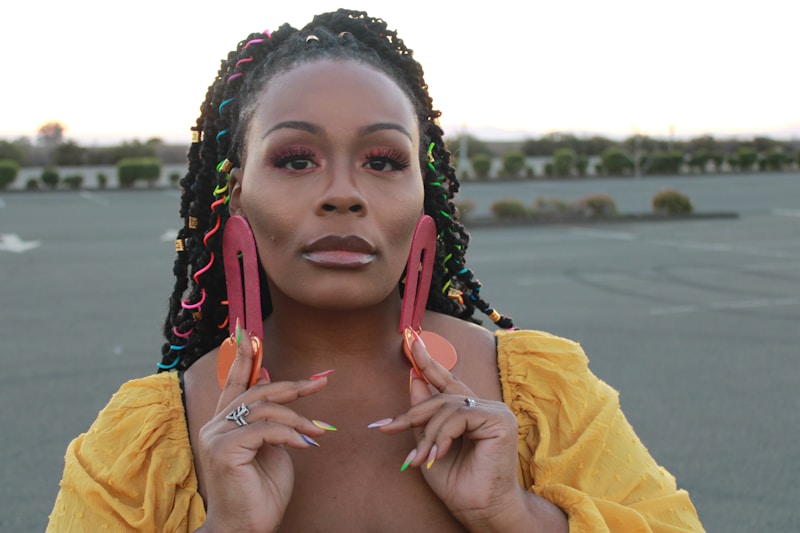Mastering Accessory Coordination: Essential Tips for Style Success
Introduction to Accessory Coordination
Accessories are the perfect finishing touch to any outfit, and mastering the art of accessory coordination can elevate your style game immensely. Whether you're dressing up for a special occasion or putting together an everyday look, knowing how to pair accessories effectively is crucial. In this article, we will provide you with practical accessory coordination tips that will make you look polished and stylish.
Understanding Accessories
Accessories come in various forms, including jewelry, bags, belts, scarves, hats, and shoes. Each piece can either enhance or detract from your overall look, depending on how well you coordinate them. Here are some essential tips to consider when incorporating accessories into your outfit.
1. Start with a Statement Piece
One effective method of accessorizing is to start with a statement piece. This could be a bold necklace, oversized earrings, or a striking handbag. The key is to choose one piece that captures attention. Once you have your statement accessory, coordinate the rest of your accessories to complement it rather than compete with it.
2. Consider Color Coordination
Colors play an essential role in accessory coordination. To achieve a harmonious look, consider using a color wheel to guide your choices. You can create a monochromatic look by using different shades of the same color, or you can opt for complementary colors that enhance each other.
| Color Scheme | Accessory Example |
| Monochromatic | Various shades of blue jewelry with a navy dress |
| Complementary | Yellow handbag with a purple dress |
| Analogous | Red, orange, and pink accessories with a coral outfit |
3. Balance Proportions
When coordinating accessories, it’s important to maintain balance. For instance, if you’re wearing a structured outfit, opt for softer accessories to create contrast. Likewise, if your outfit is loose and flowy, consider adding more structured accessories. Balancing proportions can create a visually appealing silhouette.
4. Match the Vibe
Your accessories should match not only your outfit but also the occasion. For a formal event, elegant jewelry and sophisticated handbags are appropriate. Conversely, casual outings call for playful or relaxed accessories. Always consider the context before making your accessory choices.
5. Layer Thoughtfully
Layering accessories can add depth to your outfit, but it’s crucial to do it thoughtfully. Too many layers can create chaos rather than cohesion. For example, if you’re layering necklaces, try to keep them within a similar color palette and choose varying lengths to create interest without overwhelming the viewer.
6. Don’t Forget About Scale
The scale of your accessories matters significantly. Large accessories can dominate your look, while small ones may get lost. Pay attention to your body type and the overall look you want to achieve. If you’re petite, you might want to stick to smaller, daintier accessories, while taller individuals can often pull off larger pieces effectively.
7. Pay Attention to Details
Details matter in accessory coordination. Look for textures, materials, and patterns that complement one another. For example, if you wear a leather jacket, consider leather accessories to create a cohesive theme. Mixing textures can also add an interesting contrast to your ensemble.
8. Use Accessories to Express Your Personality
Accessories are a prime way to showcase your personal style. Whether you prefer minimalist designs, vintage pieces, or bold artisanship, let your accessories reflect who you are. This creates a unique and authentic look that is distinctly yours.
9. Keep it Simple
Sometimes less is more. If you’re uncertain about how to coordinate your accessories, it’s often best to choose a few high-quality pieces rather than overwhelming your look with multiple accessories. A well-chosen watch, a simple bracelet, and a classic pair of earrings can make a statement without being overkill.
Common Accessory Coordination Mistakes
Even seasoned stylists can occasionally stumble when it comes to accessory coordination. Here are some common mistakes to avoid:
- Over-accessorizing: Adding too many accessories can clutter your look.
- Ignoring proportions: Accessories that are out of scale can throw off the entire outfit.
- Neglecting the occasion: Always tailor your accessories to the setting you’ll be in.
- Mismatch in styles: Combining too many conflicting styles can confuse the overall aesthetic.
Conclusion: Accessory Coordination Tips to Live By
Incorporating accessories into your outfits can truly transform your look. By following our accessory coordination tips, you can achieve a well-coordinated, stylish ensemble that reflects your personality and suits the occasion. Remember to start with a statement piece, consider color and scale, and balance your accessories thoughtfully. Always be mindful of the setting and your unique style expression. Ultimately, the right accessories can enhance your outfit and elevate your overall presence.
Whether you’re getting ready for a major event or simply dressing for a day out, these tips will guide you toward becoming an accessory coordination pro. Happy styling!
